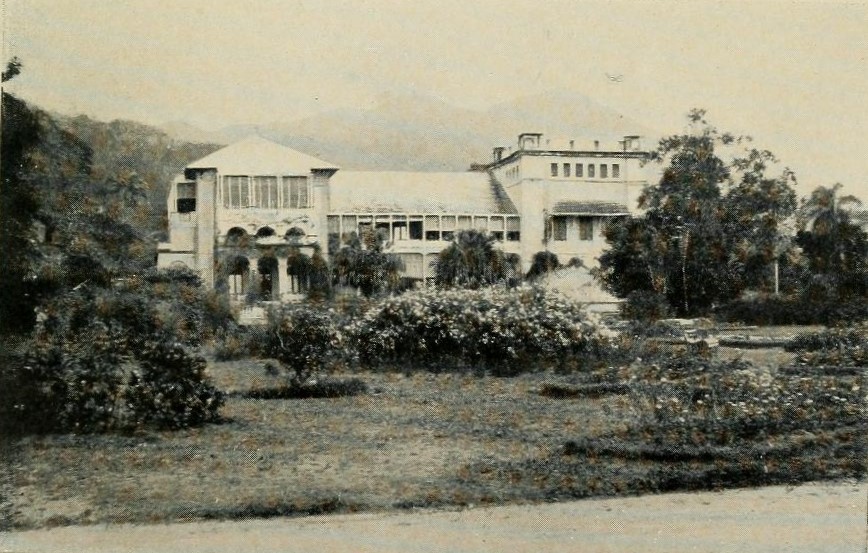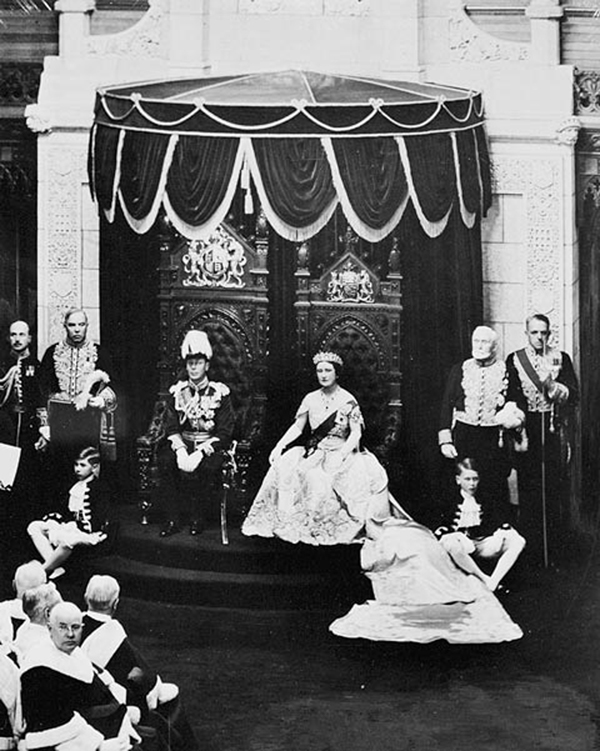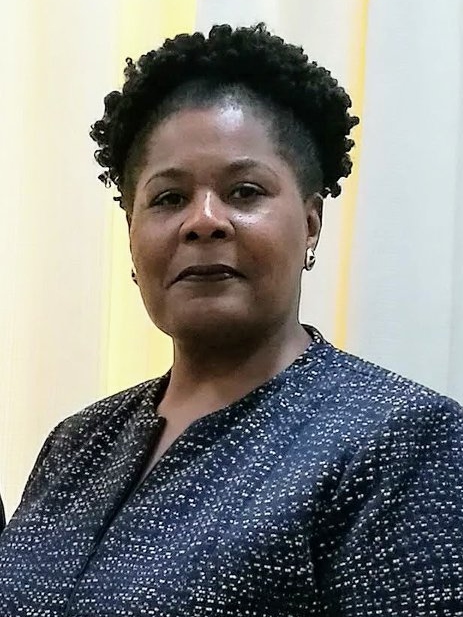|
Queen Of Trinidad And Tobago
Elizabeth II was Queen of Trinidad and Tobago from the independence of Trinidad and Tobago on 31 August 1962 until the country became a republic on 1 August 1976. Her constitutional role as head of state was delegated to a governor-general, who acted on the advice of government ministers. In 1974, a constitutional reform commission in Trinidad and Tobago, led by Chief Justice Sir Hugh Wooding, recommended that the country become a republic, in line with almost universal national opinion. A new constitution was adopted on 1 August 1976, and the country became the Republic of Trinidad and Tobago with a president as head of state, but remains a member of the Commonwealth. Elizabeth II visited Trinidad and Tobago once during her tenure, in February 1966. History At independence in 1962, Trinidad and Tobago elected to retain the monarch, Elizabeth II of the United Kingdom, as head of state instead of becoming a republic. With the collapse of the West Indies Federation, Trini ... [...More Info...] [...Related Items...] OR: [Wikipedia] [Google] [Baidu] |
Coat Of Arms Of Trinidad And Tobago
The coat of arms of Trinidad and Tobago was designed by a committee formed in 1962 to select the symbols that would be representative of the people of Trinidad and Tobago. The committee included artist Carlisle Chang (1921–2001) and carnival designer George Bailey (1935–1970)."Coat of Arms" ''The National Identity Guidelines of the Republic of Trinidad and Tobago'' (Ministry of National Diversity and Social Integration, Government of the Republic of Trinidad and Tobago), p. 4. Design The palm tree crest at the top of the coat of arms was taken from Tobago's coat of arms before it was joined in political union with Trinidad. The shield comprises the same colours (black, red, and white) as Flag of Trinidad and Tobago, the nation's flag and carry the same meaning. ...[...More Info...] [...Related Items...] OR: [Wikipedia] [Google] [Baidu] |
Port Of Spain
Port of Spain ( ; Trinidadian and Tobagonian English, Trinidadian English: ''Port ah Spain'' ) is the capital and chief port of Trinidad and Tobago. With a municipal population of 49,867 (2017), an urban population of 81,142 and a transient daily population of 250,000, it is Trinidad and Tobago's third largest municipality, after Chaguanas and San Fernando, Trinidad and Tobago, San Fernando. Port of Spain is located on the Gulf of Paria, on the northwest coast of the island of Trinidad and is part of East–West Corridor, a larger conurbation stretching from Chaguaramas, Trinidad, Chaguaramas in the west to Arima in the east with an estimated population of 600,000. The city serves primarily as a retail and administrative centre and it has been the capital of the island since 1757. It is also an important financial services centre for the Caribbean [...More Info...] [...Related Items...] OR: [Wikipedia] [Google] [Baidu] |
Judicial Committee Of The Privy Council
The Judicial Committee of the Privy Council (JCPC) is the highest court of appeal for the Crown Dependencies, the British Overseas Territories, some Commonwealth countries and a few institutions in the United Kingdom. Established on 14 August 1833 to hear appeals formerly heard by the King-in-Council, the Privy Council formerly acted as the court of last resort for the entire British Empire, except for the United Kingdom itself.P. A. Howell, ''The Judicial Committee of the Privy Council, 1833–1876: Its Origins, Structure, and Development'', Cambridge, UK: Cambridge University Press, 1979 Formally a statutory committee of His Majesty's Most Honourable Privy Council, the Judicial Committee consists of senior judges who are Privy Councillors; they are predominantly justices of the Supreme Court of the United Kingdom and senior judges from the Commonwealth of Nations. Although it is often simply referred to as the "Privy Council", the Judicial Committee is only one constitu ... [...More Info...] [...Related Items...] OR: [Wikipedia] [Google] [Baidu] |
Letter Of Credence
A letter of credence (, ) is a formal Diplomatic correspondence, diplomatic letter that designates a diplomat as ambassador to another sovereign state. Commonly known as diplomatic credentials, the letter is addressed from one head of state to another, asking them to give credence () to the ambassador's claim of speaking for their country. The letter is presented personally by the ambassador-designate to the receiving head of state in a formal ceremony, marking the beginning of the ambassadorship. Letters of credence are traditionally written in French, the ''lingua franca'' of diplomacy. However, they may also be written in the official language of the sending state. Language of letters Letters of credence between two monarchs of equal rank will typically begin with the salutation "Sir My Brother" (or "Madame My Sister", in the case of a female monarch) and close with the valediction "Your Good Brother" (or Sister, in the case of a female monarch). Presentation of credenti ... [...More Info...] [...Related Items...] OR: [Wikipedia] [Google] [Baidu] |
Flag Of The Governor-General Of Trinidad And Tobago (1962–1976)
A flag is a piece of fabric (most often rectangular) with distinctive colours and design. It is used as a symbol, a signalling device, or for decoration. The term ''flag'' is also used to refer to the graphic design employed, and flags have evolved into a general tool for rudimentary signalling and identification, especially in environments where communication is challenging (such as the maritime environment, where semaphore is used). Many flags fall into groups of similar designs called flag families. The study of flags is known as "vexillology" from the Latin , meaning "flag" or "banner". National flags are patriotic symbols with widely varied interpretations that often include strong military associations because of their original and ongoing use for that purpose. Flags are also used in messaging, advertising, or for decorative purposes. Some military units are called "flags" after their use of flags. A ''flag'' (Arabic: ) is equivalent to a brigade in Arab countries. In ... [...More Info...] [...Related Items...] OR: [Wikipedia] [Google] [Baidu] |
Dissolution Of Parliament
The dissolution of a legislative assembly (or parliament) is the simultaneous termination of service of all of its members, in anticipation that a successive legislative assembly will reconvene later with possibly different members. In a democracy, the new assembly is chosen by a general election. Dissolution is distinct on the one hand from abolition of the assembly, and on the other hand from its adjournment or prorogation, or the ending of a legislative session, any of which begins a period of inactivity after which it is anticipated that the same members will reassemble. For example, the "second session of the fifth parliament" could be followed by the "third session of the fifth parliament" after a prorogation, but would be followed by the "first session of the sixth parliament" after a dissolution. In most Continental European countries, dissolution does not have immediate effect – that is, a dissolution merely triggers an election, but the old assembly itself continues its ... [...More Info...] [...Related Items...] OR: [Wikipedia] [Google] [Baidu] |
Legislative Session
A legislative session is the period of time in which a legislature, in both parliamentary and presidential systems, is convened for purpose of lawmaking, usually being one of two or more smaller divisions of the entire time between two elections. A session may last for the full term of the legislature or the term may consist of a number of sessions. These may be of fixed duration, such as a year, or may be determined by the party in power. In some countries, a session of the legislature is brought to an end by an official act of prorogation, in others by a motion to adjourn ''sine die''. In either event, the close of a session generally brings an end to all unpassed bills in the legislature, which would have to be introduced anew to continue debate in the following session. Common procedure Historically, each session of a parliament would last less than one year, ceasing with a prorogation during which legislators could return to their constituencies. In more recent times, ... [...More Info...] [...Related Items...] OR: [Wikipedia] [Google] [Baidu] |
Her Majesty's Government (term)
The phrase His Majesty's Government (or Her Majesty's Government during the reign of a female monarch) is a formal term referring to the government of a Commonwealth realm or one of its constituent provinces, states or territories. In use since at least the height of the British Empire, the phrase has been inherited and integrated into the countries that emerged from that polity and which remain Commonwealth realms. Where Commonwealth countries have transitioned away from monarchical government (e.g. Malta) the term is entirely redundant, excepting historical usage. Geographical history In the British Empire, the term ''His (or Her) Majesty's Government'' was originally only used in reference to the Imperial government in London. As the Empire developed, and responsible government was granted to more provinces and entities within the Empire, some disambiguation of the term became necessary. In particular, the rise of Dominion status for various Imperial entities demanded phrasing ... [...More Info...] [...Related Items...] OR: [Wikipedia] [Google] [Baidu] |
Royal Assent
Royal assent is the method by which a monarch formally approves an act of the legislature, either directly or through an official acting on the monarch's behalf. In some jurisdictions, royal assent is equivalent to promulgation, while in others that is a separate step. Under a modern constitutional monarchy, royal assent is considered little more than a formality. Even in nations such as the United Kingdom, Norway, the Netherlands, Liechtenstein and Monaco which still, in theory, permit their monarch to withhold assent to laws, the monarch almost never does so, except in a dire political emergency or on advice of government. While the power to veto by withholding royal assent was once exercised often by European monarchs, such an occurrence has been very rare since the eighteenth century. Royal assent is typically associated with elaborate ceremony. In the United Kingdom the Sovereign may appear personally in the House of Lords or may appoint Lords Commissioners, who anno ... [...More Info...] [...Related Items...] OR: [Wikipedia] [Google] [Baidu] |
Governor-General Of Trinidad And Tobago
This is a list of the heads of state of Trinidad and Tobago, from the independence of Trinidad and Tobago in 1962 to the present day. From 1962 to 1976, the head of state under the Trinidad and Tobago Independence Act 1962 was the queen of Trinidad and Tobago, Elizabeth II, who was also the monarch of the other Commonwealth realms. The Queen was viceregally represented in Trinidad and Tobago by a governor-general. Trinidad and Tobago became a republic under the Constitution of 1976 and the monarch and governor-general were replaced by a ceremonial president. Monarchy (1962–1976) The succession to the throne was the same as the succession to the British throne. Governor-general The governor-general was the representative of the monarch in Trinidad and Tobago and exercised most of the powers of the monarch. The governor-general was appointed for an indefinite term, serving at the pleasure of the monarch. After the passage of the Statute of Westminster 1931, the governor-ge ... [...More Info...] [...Related Items...] OR: [Wikipedia] [Google] [Baidu] |
Executive (government)
The executive branch is the part of government which executes or enforces the law. Function The scope of executive power varies greatly depending on the political context in which it emerges, and it can change over time in a given country. In democratic countries, the executive often exercises broad influence over national politics, though limitations are often applied to the executive. In political systems based on the separation of powers, government authority is distributed between several branches to prevent power from being concentrated in the hands of a single person or group. To achieve this, each branch is subject to checks by the other two; in general, the role of the legislature is to pass laws, which are then enforced by the executive, and interpreted by the judiciary. The executive can also be the source of certain types of law or law-derived rules, such as a decree or executive order. In those that use fusion of powers, typically parliamentary systems, such as th ... [...More Info...] [...Related Items...] OR: [Wikipedia] [Google] [Baidu] |






